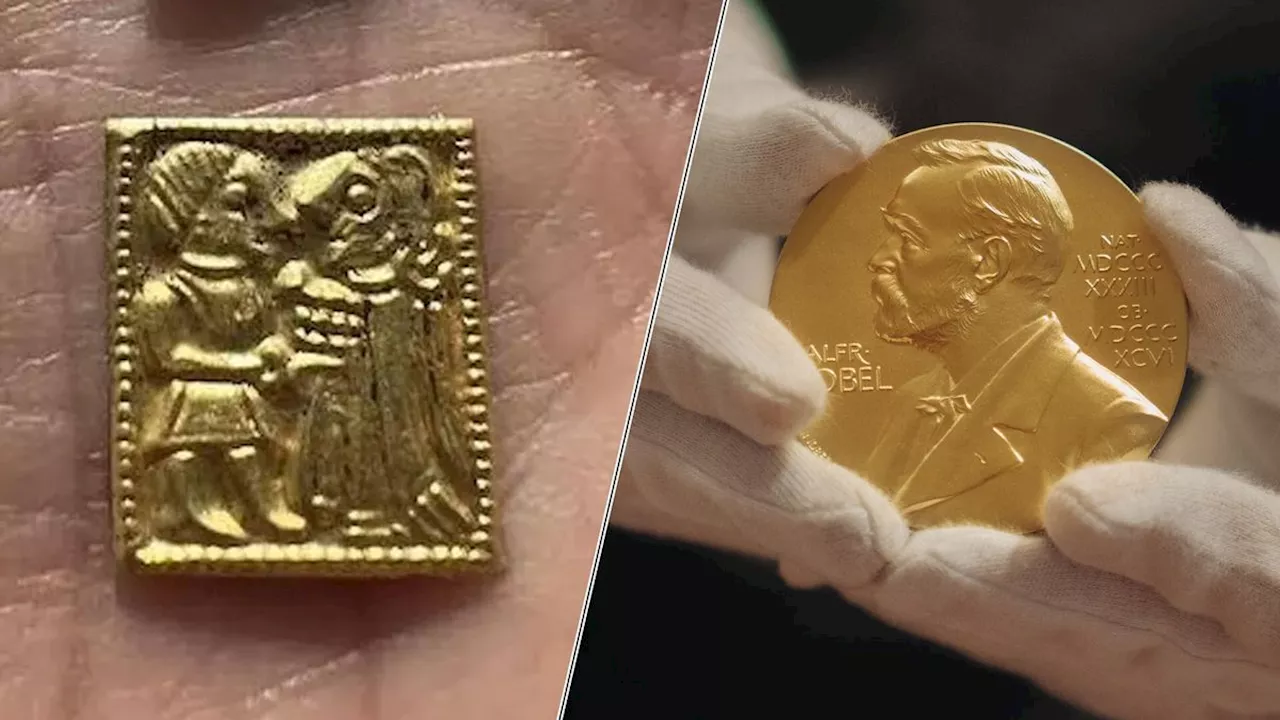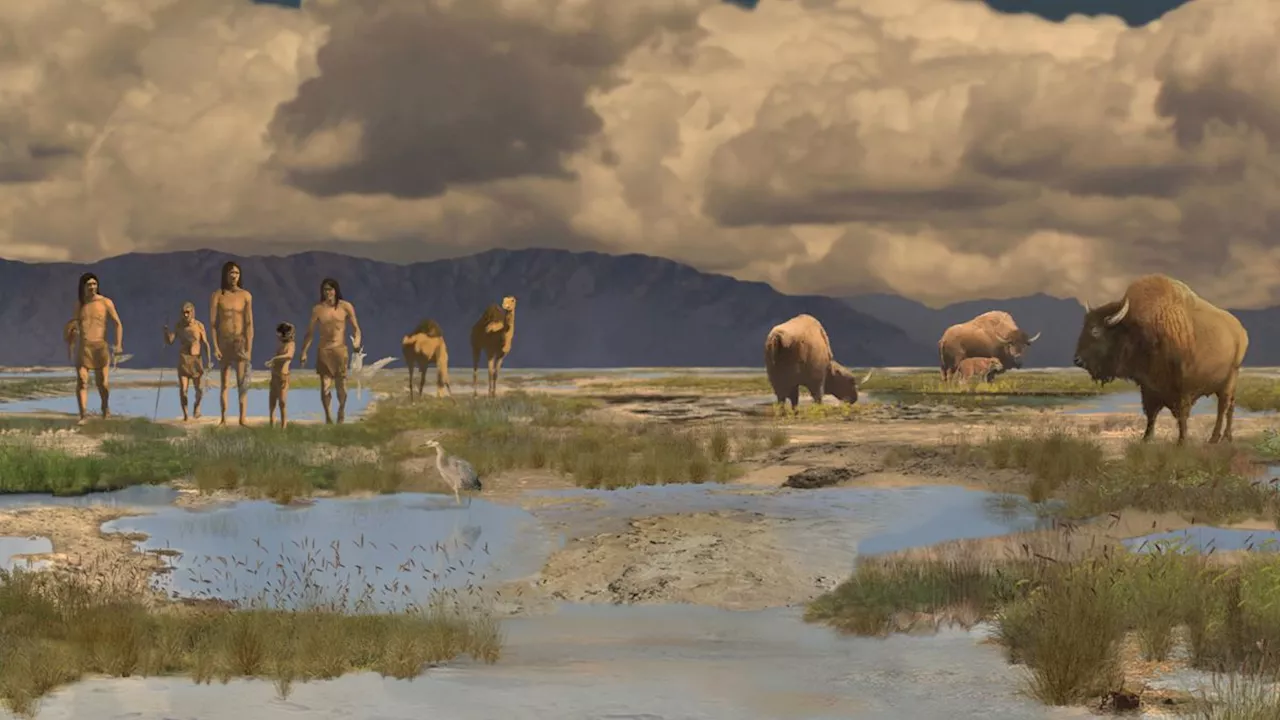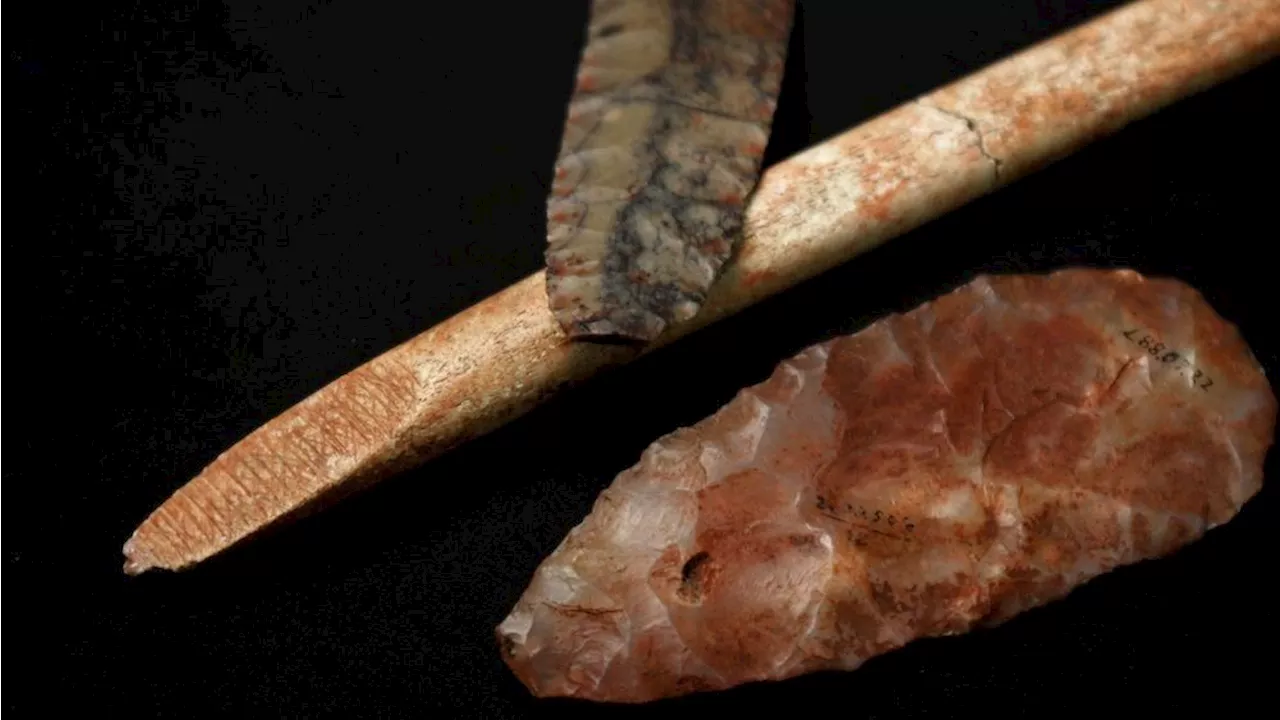Sascha is a U.K.-based trainee staff writer at Live Science. She holds a bachelor’s degree in biology from the University of Southampton in England and a master’s degree in science communication from Imperial College London. Her work has appeared in The Guardian and the health website Zoe. Besides writing, she enjoys playing tennis, bread-making and browsing second-hand shops for hidden gems.
Archaeological discoveries across the Americas have shaped our understanding of when and how humans first reached the so-called New World. The story told by artifacts unearthed from sites all the way from Alaska to Chile is hotly debated.
Spearpoints discovered in Clovis have come to define a group of people who were long believed to be the first humans to arrive in the Americas, as well as their culture. These distinctive spearpoints were chipped from stone into finger-long projectiles that are now known as"Clovis points" and were found associated with animal bones.
Tools discovered at Swan Point include projectile points made of stone and antlers, fragments of an adze for chopping wood or bone, scrapers for skinning and an awl to pierce animal hides. These objects, together with a mammoth tusk, suggest the site may have been a mammoth ivory workshop at some point in prehistory.
Archaeologists first excavated the caves in the late 1930s, revealing fragments of obsidian and bone tools, animal bones, wooden artifacts and baskets. 6. Monte Verde II, ChileMonte Verde II is one of four excavated areas in the Monte Verde archaeological complex, located near Puerto Montt, in the Los Lagos region of southern Chile. A study published earlier this year dates artifacts and structures unearthed at Monte Verde II to 14,550 years ago.
8. Meadowcroft rock shelters, PennsylvaniaThe Meadowcroft rock shelters are a National Historic Landmark, located in southwestern Pennsylvania, that contain evidence of human occupation dating to 16,000 years ago. Archaeologists have unearthed 100,000 artifacts from the site, which sits just north of Buttermilk Creek. These items include blades, scrapers and a circular core from which stone utensils were struck. They also found thousands of chert pieces — scraps and flakes created during tool production — that are at least 13,500 years old.
11. Cueva del Chiquihuite, MexicoThe Cueva del Chiquihuite, or Chiquihuite Cave, is situated in the desert mountains of north-central Mexico and contains evidence suggesting there were people in North America as early as 31,500 years ago.
México Últimas Noticias, México Titulares
Similar News:También puedes leer noticias similares a ésta que hemos recopilado de otras fuentes de noticias.
 NFL Week 5 live updates: Jaguars-Bills live, Giants-Dolphins, Ravens-Steelers, Saints-Pats, moreWeek 5 of the NFL season is in full swing, and we've got you covered with all the top moments from around the league Sunday!
NFL Week 5 live updates: Jaguars-Bills live, Giants-Dolphins, Ravens-Steelers, Saints-Pats, moreWeek 5 of the NFL season is in full swing, and we've got you covered with all the top moments from around the league Sunday!
Leer más »
 Mangrove leaf slug: The solar-powered mollusk that gobbles up sunlight then goes months without eatingSascha is a U.K.-based trainee staff writer at Live Science. She holds a bachelor’s degree in biology from the University of Southampton in England and a master’s degree in science communication from
Mangrove leaf slug: The solar-powered mollusk that gobbles up sunlight then goes months without eatingSascha is a U.K.-based trainee staff writer at Live Science. She holds a bachelor’s degree in biology from the University of Southampton in England and a master’s degree in science communication from
Leer más »
 The African Influence In The Americas: Documentary FilmJoin in for an online experience and learn about The African Influence in the Americas via a screening of the documentary film 'Walk on the River 2.0.' Through the lens of San Antonio, Texas the group explores evidence of African Influence in the Americas before and after the arrival of Europeans in this part of the world. The strongest evidence of African presence in America before Columbus comes from the pen of Columbus himself.
The African Influence In The Americas: Documentary FilmJoin in for an online experience and learn about The African Influence in the Americas via a screening of the documentary film 'Walk on the River 2.0.' Through the lens of San Antonio, Texas the group explores evidence of African Influence in the Americas before and after the arrival of Europeans in this part of the world. The strongest evidence of African presence in America before Columbus comes from the pen of Columbus himself.
Leer más »
 Further evidence points to footprints in New Mexico being the oldest sign of humans in AmericasNew research shows that fossil footprints discovered at the edge of an ancient lakebed in New Mexico's White Sands National Park date back to between 21,000 and 23,000 years ago.
Further evidence points to footprints in New Mexico being the oldest sign of humans in AmericasNew research shows that fossil footprints discovered at the edge of an ancient lakebed in New Mexico's White Sands National Park date back to between 21,000 and 23,000 years ago.
Leer más »
 Science news this week: Norse treasures and Nobel PrizesAlexander McNamara is the Editor-in-Chief at Live Science, and has more than 15 years’ experience in publishing at digital titles. More than half of this time has been dedicated to bringing the wonders of science and technology to a wider audience through editor roles at New Scientist and BBC Science Focus, developing new podcasts, newsletters and ground-breaking features along the way. Prior to this, he covered a diverse spectrum of content, ranging from women’s lifestyle, travel, sport and pol
Science news this week: Norse treasures and Nobel PrizesAlexander McNamara is the Editor-in-Chief at Live Science, and has more than 15 years’ experience in publishing at digital titles. More than half of this time has been dedicated to bringing the wonders of science and technology to a wider audience through editor roles at New Scientist and BBC Science Focus, developing new podcasts, newsletters and ground-breaking features along the way. Prior to this, he covered a diverse spectrum of content, ranging from women’s lifestyle, travel, sport and pol
Leer más »
 The 1st Americans were not who we thought they wereLaura is the archaeology and Life's Little Mysteries editor at Live Science. She also reports on general science, including paleontology. Her work has appeared in The New York Times, Scholastic, Popular Science and Spectrum, a site on autism research. She has won multiple awards from the Society of Professional Journalists and the Washington Newspaper Publishers Association for her reporting at a weekly newspaper near Seattle. Laura holds a bachelor's degree in English literature and psychology
The 1st Americans were not who we thought they wereLaura is the archaeology and Life's Little Mysteries editor at Live Science. She also reports on general science, including paleontology. Her work has appeared in The New York Times, Scholastic, Popular Science and Spectrum, a site on autism research. She has won multiple awards from the Society of Professional Journalists and the Washington Newspaper Publishers Association for her reporting at a weekly newspaper near Seattle. Laura holds a bachelor's degree in English literature and psychology
Leer más »
